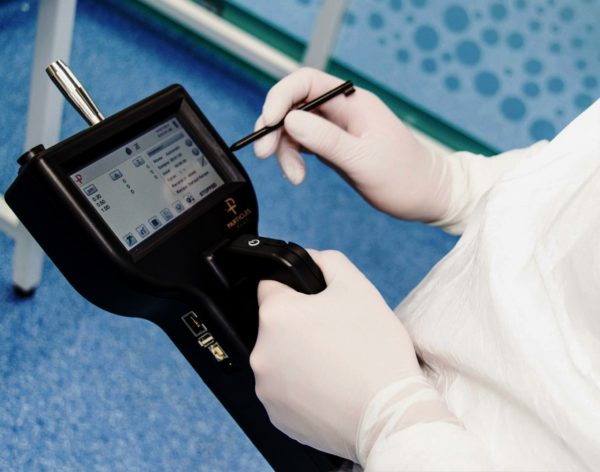APT uses the latest Airborne Particulate Counters to undertake Particle Testing to Clean Rooms. Many people assume that’s the only type of Particle Counters; however, there are many varieties of particle counters. The primary differences depend upon the medium in which particles are suspended: air, liquid, gas, vacuum, or atmospheric/meteorological.

Airborne Particle Counters
Airborne particle counters measure air contamination in HEPA-filtered cleanrooms for disk drive assemblies, pharmaceutical manufacturers, small test benches, rocket launch facilities, and hundreds of different controlled air applications. WE use this type of Particle Counter during our clean room testing.
Liquid Particle Counters
Liquid particle counters measure contamination in a wide range of fluids including drinking water, injectable drugs, transmission fluids, and hydrofluoric acids. Some liquid particle counters require an accessory called a Sampler. A sampler communicates with the particle counter, automatically extracts a precise volume of liquid, and, programmed with the counter’s specific delivery rate, dispenses the liquid to the particle counter. Some liquid counters directly connect into plumbing lines or use pressurized gases to eliminate bubbles in chemicals.
Gas Particle Counters
Gas particle counters measure contamination suspended in gases. These gases may be either inert or volatile, and either dry (anhydrous) or contain trace water vapours. Usually, the gas particle counter’s design provides contamination measurements at pressures ranging from 40 – 150 psig.
Vacuum Particle Counters
Vacuum particle counters fill a niche market where processes occur under negative pressures (vacuum), which offer unique challenges. Particles do not exhibit predictable movement in vacuum, so specialized particle counters must depend upon a particle’s momentum for detection.
Atmospheric/Meteorological Particle Counters
One of the original particle counter applications, atmospheric (or meteorological) particle counters examine atmospheric contamination like pollution or provide detailed weather studies. These instruments measure water droplets, ice crystals, condensation nuclei, or contamination drift from oil fires and volcanic eruptions.
